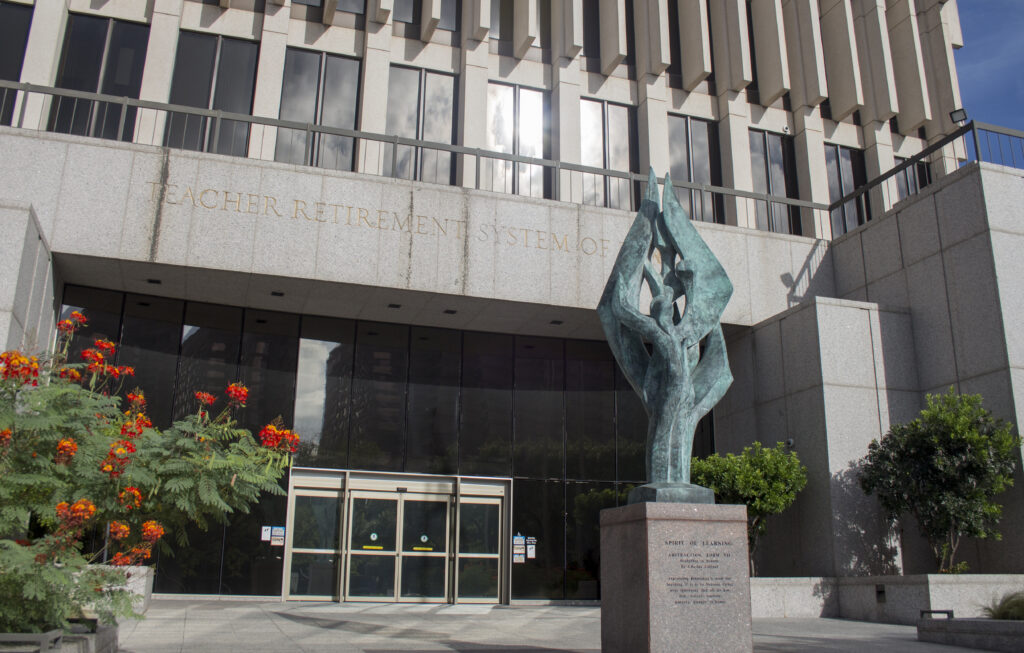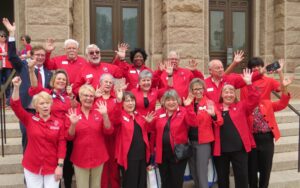Former State Representative Ron Simmons wrote an op-ed for the Dallas Morning News on July 18 entitled “Texas teachers would be better off without a pension system.” In the article, Simmons promotes the idea that a hybrid defined contribution (DC) approach would be better for Texas’ dedicated public-school teachers, rather than the current defined benefit (DB) plan. The members of the Texas Retired Teachers Association respectfully disagree with Mr. Simmons and believe the points he raised are both in error and misrepresentative of the current value of the Teacher Retirement System of Texas (TRS) defined benefit retirement plan to its participants.
While Simmons intends to hold public-school educators’ best interests at heart, his article neglects several important details about why the current DB plan—which provides a guaranteed lifetime annuity—is what’s best for TRS retirees and pre-retirees.
Simmons supports his position by saying that “a whopping 94% of Fortune 500 companies have abandoned their DB plan in favor of a DC plan.” However, Texas educators are not private sector employees. Private sector employees have Social Security (SS) in addition to any private retirement accounts and savings they may have.
A whopping 95% of public-school districts and their employees in Texas do not participate in the federal SS program. Their annuity from TRS is often their sole form of retirement security. Most also do not qualify for ANY SS benefits due to two federal provisions that take away most or all of their earned SS income (the Government Pension Offset and the Windfall Elimination Provision).
Simmons optimistically states that when educators manage their own DC plan, we can assume “the average annual investment returns in the teachers’ account is 6%.” Using a 6% assumed earnings, net of fees, is not conservative for money not professionally managed. Using a rate of 5 percent or less after fees is more realistic and increases the chances of members outliving their 401(k).
He also paints an overly positive picture of the educator’s account balance, stating that “upon retirement, the teacher would have an account balance of approximately $1.1 million.” However, as many private citizens investing in the stock market know, timing is everything. If an educator in a 401(k) plan retired during periods of market downturn that occurred in 2001, 2008, or even 2022, their 401(k) balance at retirement was likely not enough to fund their annuity for the rest of their lives.
Generally, as individuals approach retirement age, they usually reduce their exposure to equities and move money into fixed income. Earnings can be significantly less as evidenced by low interest rates over the last decade.
Public-school teachers, who are already overburdened in the classroom, should not be required to become money managers or to worry about their retirement security as they focus on their daily work. The majority of TRS members will do significantly worse investing on their own in a plan with a DC component than the professionals who work on their behalf with the TRS pension fund. TRS modeling has shown that under a DC plan, 94.7% of retirees will ultimately receive less than with the current DB plan.
Furthermore, women make up 75% of the TRS population and tend to have a longer life expectancy. A lifetime benefit, such as TRS or SS, mitigates the risk of a retiree who—due to longevity, market volatility, or failure to invest adequately—outlives her or his savings.
While Simmons agrees that that State “must fulfill our obligations,” he asserts that Texas taxpayers and teachers “should not be tied to a defined benefit retirement plan forever.” The implication here is that the State and taxpayers are shouldering a large portion of burden for funding TRS, which is simply and grossly inaccurate. Approximately 62.3% of the revenue for the fund comes from investments, all managed by TRS-employed investment professionals. The State and active school employee members each contribute slightly less than 20 percent of the funding for the retirement system.
Using this approach to managing educators’ retirement fund is also more affordable for taxpayers. Per TRS, “actuarial modeling shows that to provide the same level of benefits, other plan designs are 30-124% more expensive than the current TRS defined benefit plan.” TRS is also more cost effective for employers because, as a qualified replacement plan to SS, this saves an estimated $1.65 billion annually.
I know and like Ron and am extremely grateful for his public service. On this issue, I am proud to say the body of evidence in favor of the traditional defined benefit plan for our TRS retirees and current education workforce is clear. Alternatively, working to move toward a defined contribution plan for Texas TRS is bad for retirees, bad for active school employees, bad for the TRS pension trust fund, and bad for Texas.
Both active and retired educators would prefer to serve the children of the State of Texas and be engaged citizens who can focus on voting, thanking their legislators for their service to the state, and volunteering in their communities. They should not have to worry about their retirement future.
As TRS and the Legislature like to say, “we are in the forever business.” Together, they work to make prudent decisions now to benefit all current and future retirees for the long term, and to honor these unsung heroes’ dedication to Texas school children by keeping their promise.

Tim Lee
Executive Director
Texas Retired Teachers Association




